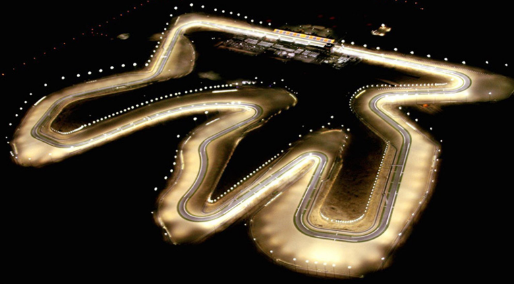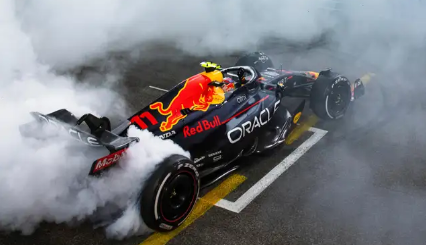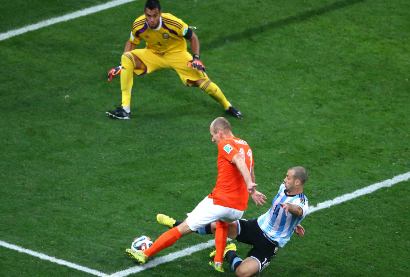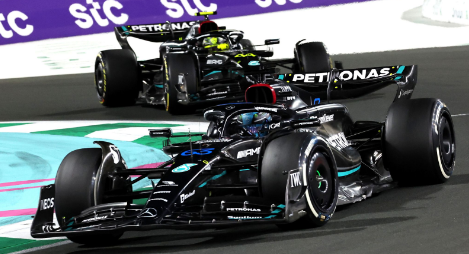Filed under:
Motorsport has long been known to be dangerous, high speeds and hard impacts have given it this well deserved reputation. In many ways the world of racing has come far from the days where a driver lost their life nearly every race. However in a forever changing world there seems to be new threats popping up for drivers every year. The figurehead behind these threats to safety is the same organizations meant to regulate racing and safety. The FIA’s true nature was on full display in Qatar with countless reports of drivers falling ill during and after the race. A day after the race’s conclusion the FIA released a hollow statement on how they’ll “investigate” the matter. Qatar has now quickly become the most recent failure in a long line of decisions based around their own profits not the people they're meant to protect.
Before any actual racing took place concerns were being raised about the track. Drivers and personnel alike commented on the temperatures being worse than normal, new issues popped up at every corner with free practice and qualifying highlighting extreme tire and track issues. The newly redone track was slippery and with it being a sprint race weekend there was no real time for rubber to be laid down. The track, being slicker from the beginning, was made even more difficult as Pirelli found issues with core tire performance at such high temperatures. News of tires failing to hold up or becoming dangerous due to temperature and track was brought to officials' attention well before the GP start. In response to reports of a critical component of the cars failing the FIA decided the best course of action regardless of the fact they were two days into schedule was to implement a 18 lap hard limit for tires. While this did take a step to solve a byproduct it failed to address the root of the tracks issue. Problems like weeds continue to sprout when the root is allowed to live.
Issues continued to pour in towards the middle of the GP when reports of driver Logan Sargent feeling ill first began. Sargents reports of feeling unwell came after Fernando Alonso spoke over the radio about the immense heat coming from his seat causing discomfort and pain. While Alonso was able to finish the race Sargent was forced to end early over health concerns connected to the heat. The young driver was then seen needing help out of his car in the pits. Sargent wasn’t alone in feelings of illness. After the checkered flag driver after driver seemed to be saying the same thing; they were beyond unwell. On boards from Lance Stroll show him barely able to get out of his car and stumbling to an ambulance immediately after. Driver Alex Albon needed to be helped out of his car by a mechanic due to weakness after the race. As the minutes ticked on more and more alarming stories were being reported by drivers about the nearly tortuous conditions on the track.
The P1 P2 duo of Max Verstappen and Oscar Piastri both found themselves exhausted to the point of collapsing on the floor of the cool down room. While these two didn’t speak specifically on the in race conditions other drivers described the dangerous conditions in depth. In a conversation with his engineer Esteban Ocon admitted he got sick in his helmet around lap 15 and simply kept going. In a post race interview Stroll described the feeling of almost losing consciousness stating in an interview with Sky Sports, “In these temperatures everything goes blurry, the last 25-30 laps it’s just blurry, the high speed corners blood pressure dropping and just passing out basically in the car in the high speed corners.” Stroll wasn’t alone with George Russel sharing about a similar faint feeling during the race. In his post race interview Lando Norris described seeing several unnamed drivers pass out in the medical center. For those who say Qatar is simply a physical race note that Singapore is a well known physical race with high temperatures and yet we saw none of these issues arise. At the end of the day no driver should be made to put added risk to their life over a race. These conditions not only increased the risk of injury and illness but they were also extremely predictable.
Formula 1 made the incredible choice to sign a 10 year contract with Qatar for a race that then has to take place in the hottest part of the year in one of the hottest countries. While the FIA says the later scheduling will eliminate these conditions from future races, the truth is we’re constantly seeing places like Qatar stay hotter for longer. In terms of the race that took place earlier this week the FIA along with Formula 1 track weather leading up to race day, the temperatures in Qatar where by the way it is summer had been climbing for weeks. The FIA not only knew the temperature outside the car but they almost certainly knew or at the very least could assume the approximate temperature that the cars would get to.
To prove this idea let’s do some of our own math. Let’s look at the predicted temperature in Qatar for Monday October 9th, a quick google search will show you that the high is 39℃ with the low being 28℃. For my fellow Americans that translates to a high of over 100 and a low around 82. The average cockpit temperature is around 50℃ (122) while in extreme cases, including extreme weather, the cockpit of a Formula 1 car can reach up to 60℃ or about 14o degrees Fahrenheit. A study about NASCAR found the cars were typically 30-40 degrees hotter inside than the temperature outside, while the two cars and racing styles are extremely different the study still acts as an example of widespread temperature concerns across motorsport. For reference to just how hot these cars are look to leading scientists who all agree that sustained temperatures of around 43℃ lead to severe bodily harm. Both organizations are well aware of the potential damage that can be done by these outrageous temperatures and yet continue to hold a race that actively endangers the lives of drivers for nothing more than a check.
While Qatar is the most recent example of Formula 1 and the FIA ignoring safety underlying safety issues it certainly isn’t the only one. Both organizations have a long history of failing to step in and actually solve an issue either because they stand to lose money or because not fixing it stands to “stir the pot.” This year alone there have been multiple instances of a failure to solve underlying issues. In Spa, a track already known for being fatal, it was set to receive heavy rain so the FIA mandated slicks. It was only after collisions and issues continued on track that they issued a red flag. Safety has increasingly been an afterthought for an organization that has a bandaid budget for bullet hole problems. Outside of just track issues the FIA is notoriously slow to penalize certain problematic drivers.
For three races in a row Sergio “Checo” Perez seemed to be bowling with his fellow drivers' cars. While the king of street circuits is often over criticized his recent driving presents some serious concerns. In two races he caused four collisions with there being two incidents in back to back races. The FIA’s response to this was two weak 5 second penalties he was allowed to serve by going back on track after he had already retired. Going further back to the already controversial Abu Dahbi 2021 race, we saw on full display the organization was far from afraid of bending the rules to provide “excitement” even when that risks the drivers. The FIA and Formula 1 have a legal and moral obligation to keep these drivers safe even when it means penalizing another driver yet safety is a consistent after thought. Time and time again they go for the dramatic path of least resistance. Sometimes in order to thrive one must resist.
What happened in Qatar with drivers on the verge of losing consciousness on an already difficult track should never have happened and should never happen again. These drivers are some of the top athletes in the world but being an athlete doesn’t mean they aren’t human. I will always be sad to see a race canceled but I would forever rather see a race cancelation than a funeral. Qatar may be under contract and paying massive amounts of money to host but no amount of money is worth the health and safety of the drivers that create this sport. The dangers created by oversights the governing organizations committed in Qatar aren’t new but rather the most recent in a long line of decisions centered around drama and money not the drivers they promise to protect. Qatar should not have been held this year and if Formula 1 has learned anything from this they should break the contract and not hold Qatar next season no matter how much money the government funnels into F1 and the FIA’s pockets.




